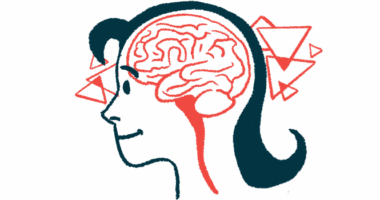Caffeine and NAD+ Bolster Health of Motor Neurons From ALS Mouse Model

Caffeine, an antioxidant with neuroprotective properties, was seen to promote the normal development of lab-cultured motor neurons isolated from a mouse model of sporadic amyotrophic lateral sclerosis (ALS).
Similar results were also found with nicotinamide adenine dinucleotide in its oxidized form (NAD+), a metabolic cofactor that is important for several chemical reactions in the body.
These findings indicate that both caffeine and NAD+ have the potential to be used in the development of new therapies for ALS.
The study, “Caffeine and NAD+ Improve Motor Neural Integrity of Dissociated Wobbler Cells In Vitro,” was published in the journal Antioxidants.
ALS is caused by the progressive loss of upper and lower motor neurons — nerve cells responsible for controlling voluntary muscle movement — in the spinal cord and brain.
Recent studies suggest that oxidative stress, brought on by the buildup of reactive oxygen species (ROS) — oxidant molecules resulting from a cell’s normal metabolism — is a key mechanism in the development of sporadic ALS, the most common form of the disease.
These studies also highlight the importance to neuronal health of NAD+, one of the metabolic cofactors helping to lower ROS levels inside cells, and of nicotinic acid mononucleotide transferase 2 (Nmnat2), one of the enzymes responsible for NAD+ production.
More recently, it has been reported that both NAD+ and Nmnat2 are found in very low levels in the spinal cord of wobbler mice, animals whose symptoms resemble those of sporadic ALS patients and are used as a disease model in ALS research. This finding reinforces the relevance of these two factors in ALS development.
Caffeine is known as a powerful antioxidant, and has been shown to increase Nmnat2 levels in neurons.
To investigate in more detail the potential benefits of caffeine and NAD+ in motor neuron health, investigators at Ruhr University Bochum in Germany isolated motor neurons from 20- and 40-day-old wobbler mice. These nerve cells were then treated with caffeine and NAD+ while growing in a lab dish.
The length of neurites — cell body extensions that neurons normally use to communicate with each other — served to judge the health of these motor nerve cells: the longer these segments, the healthier were the lab-cultured neurons.
After 14 days in culture, both NAD+ and caffeine were found to increase the length of motor neuron neurites, which remained much shorter in untreated cells.
This was true for motor neurons that had been isolated from 20-day-old mice that were in a progressive stage of the disease, and for 40-day-old mice that had reached a state of stable disease.
Additional experiments confirmed that adding caffeine to cell culture media stimulated the production of Nmnat2 in motor neurons taken from 20- and 40-day-old animals.
“All in all, caffeine as well as NAD+ were both shown to have a positive impact on the in vitro development of motor neurons of wobbler mice, and thus, purport to be promising agents for further investigations into potential pharmacological treatments of both wobbler and ALS disease,” the researchers concluded.






